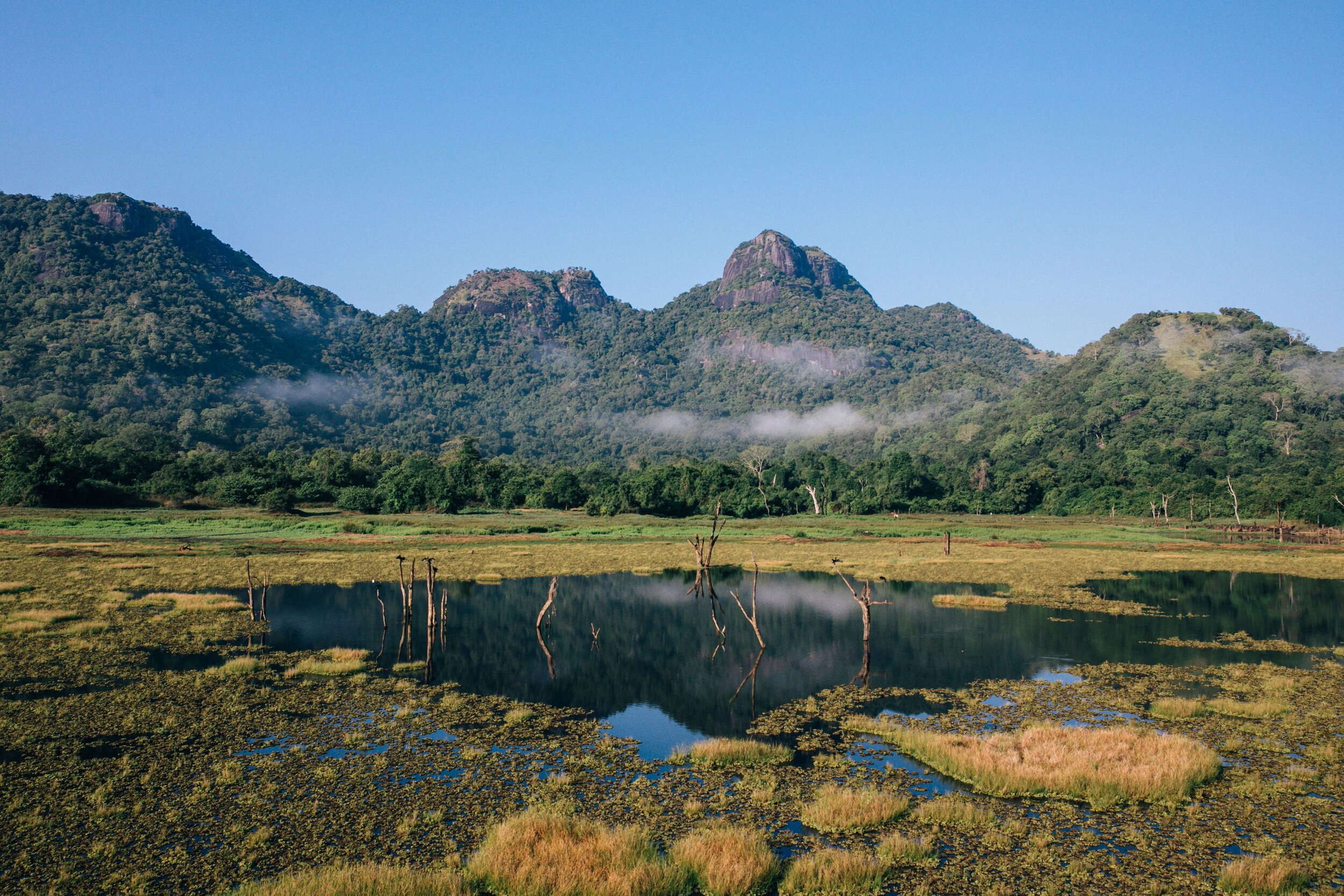
History and Geography of the Park
History
Now a refuge for wildlife, it’s said that the region surrounding Gal Oya, in the east of Sri Lanka, once provided sanctuary for Sinhala Kings.
In the 2nd Century BC, King Tissa is thought to have fled to Digavapi, a site visited, it’s claimed, by Lord Buddha and one still attracting thousands of pilgrims today.
Established in 1954, administration of the Park was given to The Department of Wildlife Conservation in 1965 and considerable efforts have been made to protect both the animal populations of the Park as well as the habitats - often threatened by illegal logging and grass burning - that are their homes.
Off-limits for much of Sri Lanka’s civil war, the Park has attracted growing attention and increasing numbers of visitors since the early 2000s.
Geography
With elevations from 30m to 900m Gal Oya National Park boasts a rich and varied topography and the wide range of ecosystems that go with it.
Granite hills, evergreen valleys and large water reservoirs offer tranquil and breathtaking scenery.
The entire protected region - including the Sanctuaries of Senanayake Samudraya, Gal Oya Valley North-East and Gal Oya Valley South-East - extends over 64,000 hectares, with vegetation from rich grasslands to ancient forests. The Park itself is just under 26,000 hectares.

From herds of swimming elephant to plentiful, though rarely seen, leopard, Gal Oya National Park boasts some of Sri Lanka’s most varied and precious wildlife.
Threats & Conservation
Like every other pristine ecosystem Gal Oya faces its own challenges to retain its rich biodiversity.
Illegal logging and the trade of protected medicinal plants have been recorded in the area.
A delicate balance is sought between the economic needs of local communities and the goal of protecting the region’s natural ecosystems.
Encroachment into the Park for cattle grazing is ever more common as is the burning of tall grassland habitats for the planting of grain crops.
Tampering with habitats inside Gal Oya national park could lead to irreparable loss and the Department for Wildlife Conservation is taking measures to lessen the impact.
A wildlife corridor with Madhur Oya Park has been proposed for the safe movement of Elephants and other wildlife.
Park boundaries are being reconstructed and Park officials are pro-actively partnering with conservation bodies to ensure proper law enforcement as well as funding research projects that better educate on the value the Park holds.


